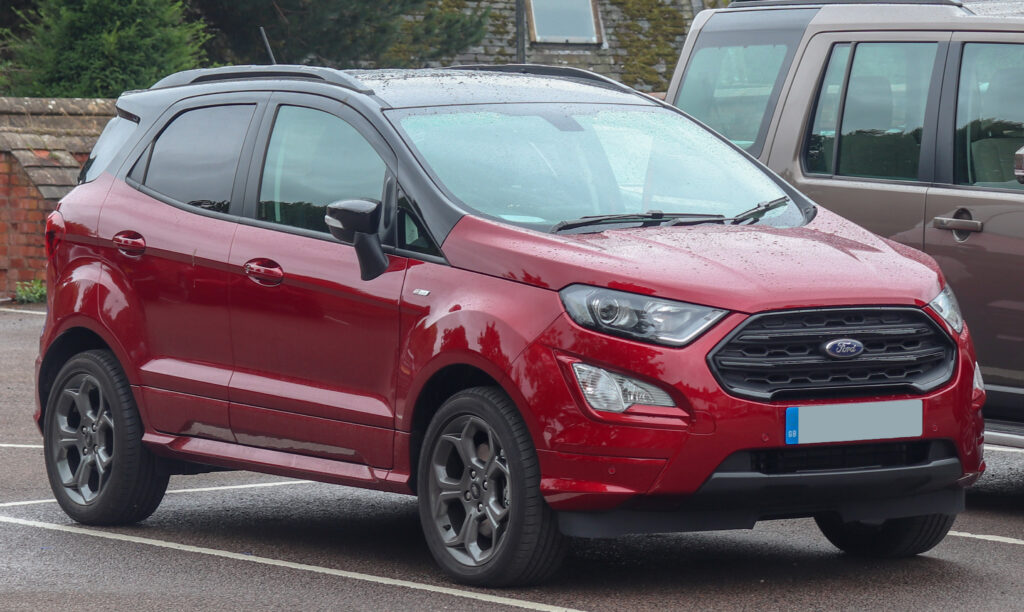
Collecting classic cars doesn’t have to be an exclusive pursuit reserved only for the affluent. Far too often, the image of vintage automobiles is linked with astronomical auction prices and climate-controlled garages, fostering a perception that ownership is beyond the reach of the average enthusiast. However, the reality is far more exciting and accessible for anyone passionate about automotive history.
Indeed, a treasure trove of timeless vehicles exists that won’t necessitate draining your life savings. These budget-friendly options offer a genuine blend of iconic style, profound nostalgia, and a unique driving experience that contemporary cars often simply cannot replicate. They represent an opportunity to connect with an era of automotive design and engineering that holds a special place in history.
Whether you’re a seasoned collector looking to expand your diverse garage or an aspiring enthusiast just beginning your journey, our curated list spotlights some of the most enduring and surprisingly affordable classic cars available today. We’ll delve into what makes each of these machines legendary, why they remain accessible, and what you can expect from owning a true piece of motoring heritage.
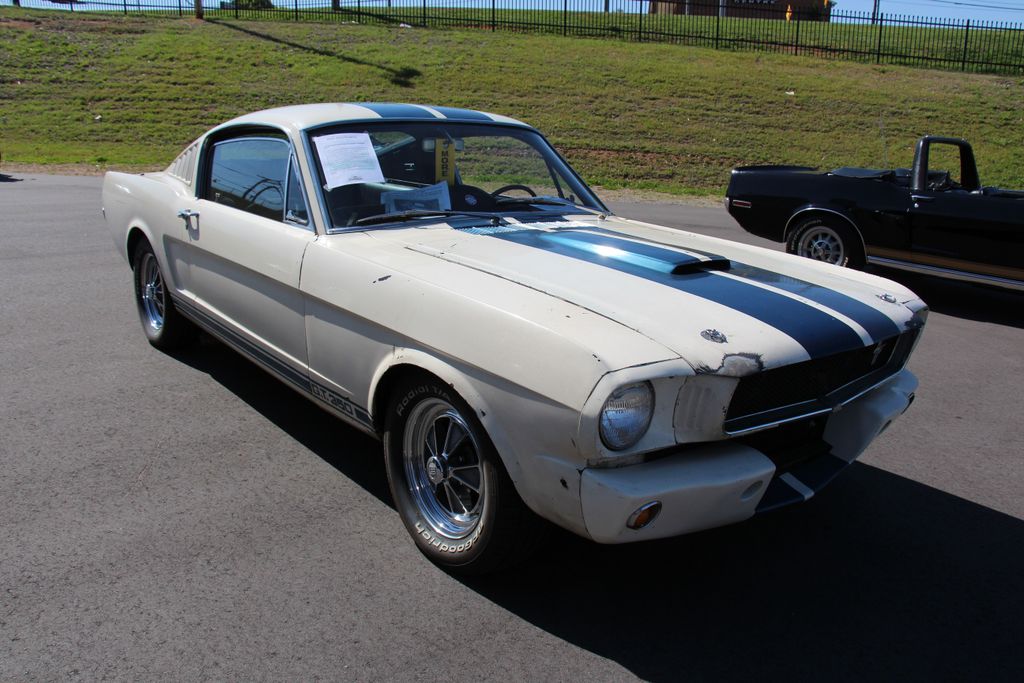
1. **Ford Mustang (1965-1970)**The iconic first-generation Ford Mustang stands as a quintessential symbol of American muscle and a landmark in automotive design. Introduced in 1964, it quickly became a runaway hit, capturing the hearts of a generation with its sleek lines, long hood, and short deck. This car wasn’t just a vehicle; it was a cultural phenomenon, defining an entire segment of the market.
Despite its legendary status and immense popularity, early models of the Ford Mustang surprisingly remain relatively affordable in today’s classic car market. Enthusiasts can often find well-kept examples at reasonable prices, especially when considering the sheer volume produced. Its powerful V8 engine options further solidify its appeal, offering a thrilling driving experience that truly embodies the spirit of American performance.
Beyond its undeniable curb appeal and robust performance, the first-generation Mustang is celebrated for its owner-friendly nature. It’s known for being fun to drive and remarkably easy to work on, making it an ideal choice for new classic car owners eager to engage with their vehicle’s mechanics. Furthermore, the ample aftermarket support ensures that parts are plentiful and repairs are straightforward, allowing for endless enjoyment without breaking the bank.
Car Model Information: 2022 Ford Mustang EcoBoost
Name: Ford Mustang
Caption: 2018 Ford Mustang GT 5.0
Aka: Ford T5 (Germany)
Manufacturer: Ford Motor Company
Production: March 1964 – present
ModelYears: 1965–present
Class: Unbulleted list
BodyStyle: Unbulleted list
Layout: Front-engine, rear-wheel-drive layout
Categories: 1970s cars, 1980s cars, 1990s cars, 2+2 coupés, 2000s cars
Summary: The Ford Mustang is a series of American automobiles manufactured by Ford. In continuous production since 1964, the Mustang is currently the longest-produced Ford car nameplate. Currently in its seventh generation, it is the fifth-best selling Ford car nameplate. The namesake of the “pony car” automobile segment, the Mustang was developed as a highly styled line of sporty coupes and convertibles derived from existing model lines, initially distinguished by “long hood, short deck” proportions.
Originally predicted to sell 100,000 vehicles yearly, the 1965 Mustang became the most successful vehicle launch since the 1927 Model A. Introduced on April 17, 1964 (16 days after the Plymouth Barracuda), over 400,000 units were sold in its first year; the one-millionth Mustang was sold within two years of its launch. In August 2018, Ford produced the 10-millionth Mustang; matching the first 1965 Mustang, the vehicle was a 2019 Wimbledon White convertible with a V8 engine.
The success of the Mustang launch led to multiple competitors from other American manufacturers, including the Chevrolet Camaro and Pontiac Firebird (1967), AMC Javelin (1968), and Dodge Challenger (1970). It also competed with the Plymouth Barracuda, which was launched around the same time. The Mustang also had an effect on designs of coupes worldwide, leading to the marketing of the Toyota Celica and Ford Capri in the United States (the latter, by Lincoln-Mercury). The Mercury Cougar was launched in 1967 as a unique-bodied higher-trim alternative to the Mustang; during the 1970s, it included more features and was marketed as a personal luxury car.
From 1965 until 2004, the Mustang shared chassis commonality with other Ford model lines, staying rear-wheel-drive throughout its production. From 1965 to 1973, the Mustang was derived from the 1960 Ford Falcon compact. From 1974 until 1978, the Mustang (denoted Mustang II) was a longer-wheelbase version of the Ford Pinto. From 1979 until 2004, the Mustang shared its Fox platform chassis with 14 other Ford vehicles (becoming the final one to use the Fox architecture). Since 2005, Ford has produced two generations of the Mustang, each using a distinct platform unique to the model line.
Through its production, multiple nameplates have been associated with the Ford Mustang series, including GT, Mach 1, Boss 302/429, Cobra (separate from Shelby Cobra), and Bullitt, along with “5.0” fender badging (denoting 4.9 L OHV or 5.0 L DOHC V8 engines).
Get more information about: Ford Mustang
Buying a high-performing used car >>>
Brand: Ford Model: Mustang
Price: $24,996 Mileage: 28,115 mi.
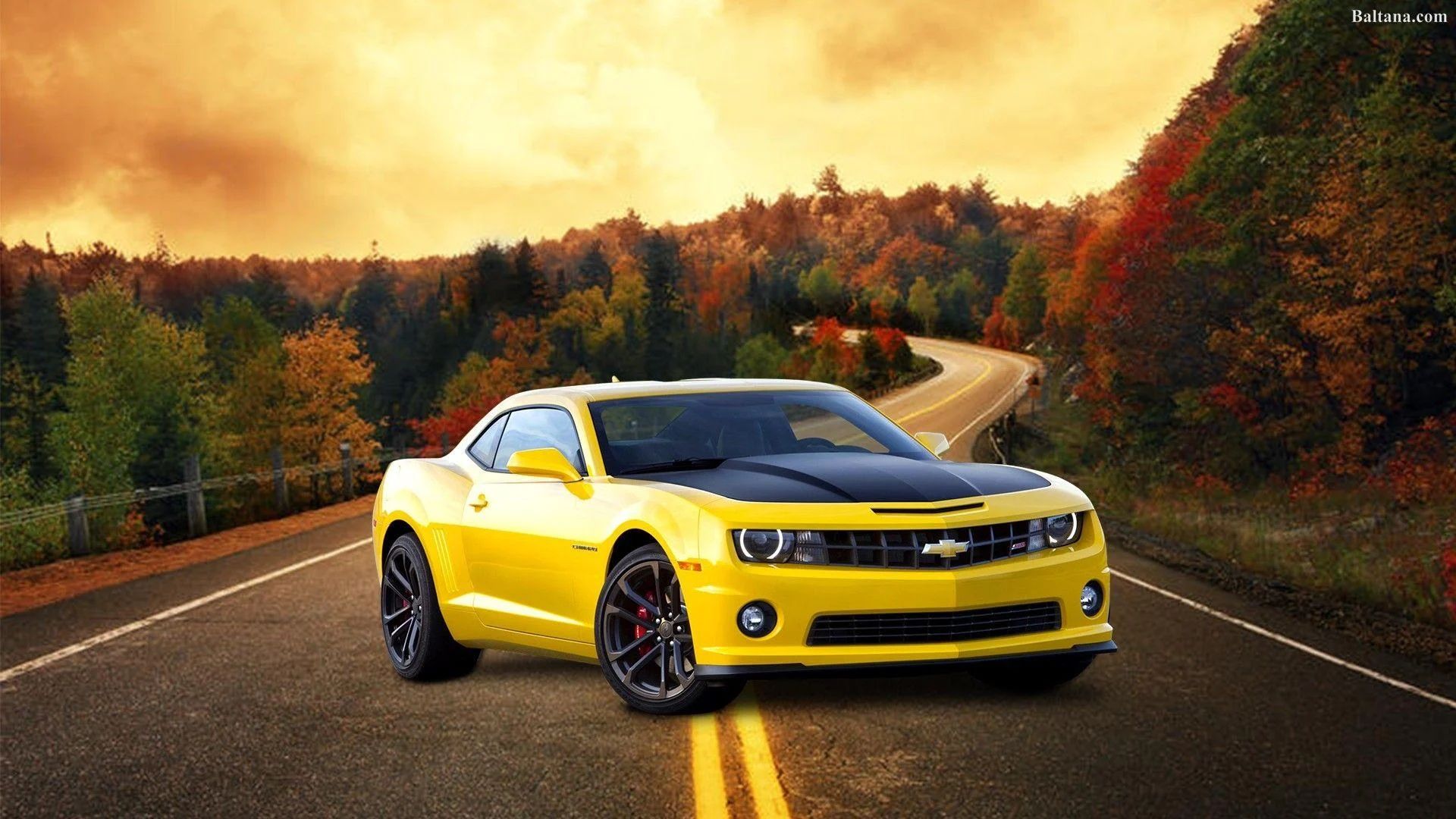
2. **Chevrolet Camaro (1967-1969)**Directly challenging the Mustang for pony car supremacy, the first-generation Chevrolet Camaro roared onto the scene with its own distinct personality. Known for its aggressive styling and robust performance, the Camaro quickly carved out its niche as a classic muscle car that continues to offer exceptional value in the enthusiast market. Its bold stance and powerful presence truly set it apart.
This era of the Camaro provided a versatile range of engine options, catering to a wide spectrum of drivers. From economical inline-sixes suitable for daily commuting to the truly powerful V8s designed for exhilarating performance, there was a Camaro for nearly every budget and driving preference. This flexibility makes it an incredibly attractive and adaptable choice for collectors on a budget, offering performance without compromise.
Many car fans passionately love the Camaro for its compelling blend of classic American style and raw power, a combination that remains as potent today as it was decades ago. Sharing many components with other GM platforms, parts are also relatively easy to find, which simplifies repairs and upgrades. The first-generation Camaro is, without doubt, a cornerstone of accessible muscle car ownership.
Car Model Information: 1968 Chevrolet Camaro
Name: Chevrolet Camaro
Manufacturer: Chevrolet
Production: 1966–2002,2009–2023
ModelYears: 1967–2002,2010–2024
Class: Pony car
BodyStyle: coupe,convertible
Platform: GM F platform,GM Zeta platform,GM Alpha platform
Layout: Front-engine, rear-wheel-drive layout
Categories: 1970s cars, 1980s cars, 1990s cars, 2+2 coupés, 2000s cars
Summary: The Chevrolet Camaro is a mid-size American automobile manufactured by Chevrolet, classified as a pony car. It first went on sale on September 29, 1966, for the 1967 model year and was designed to compete with the Ford Mustang. The Camaro shared its platform and major components with the Firebird, produced by General Motors’ Pontiac division that was also introduced for the 1967 model year.
Four distinct generations of the Camaro were developed before production ended in 2002. The nameplate was revived on a concept car that evolved into the fifth-generation Camaro; production started on March 16, 2009.
Production of the sixth generation of the Camaro ended in December 2023, for the 2024 model year.
Get more information about: Chevrolet Camaro
Buying a high-performing used car >>>
Brand: Chevrolet Model: Camaro
Price: $79,980 Mileage: 1,713 mi.
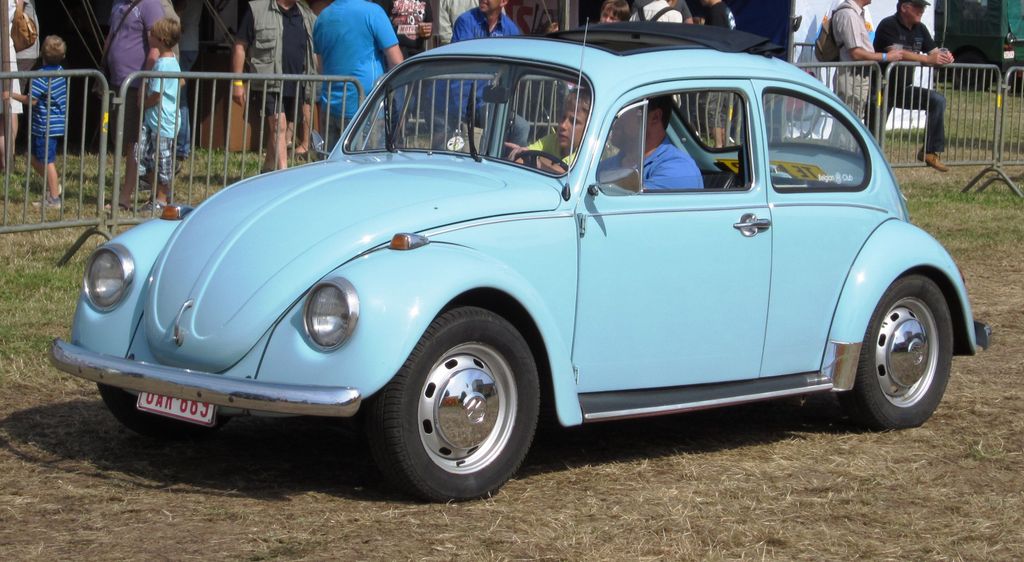
3. **Volkswagen Beetle (1960s-1970s)**The Volkswagen Beetle holds a unique and revered position as one of the most recognizable and universally beloved classic cars ever produced. Its distinct, rounded shape and unique air-cooled engine note are instantly identifiable worldwide, cementing its status as an automotive icon. This car transcended mere transportation to become a cultural touchstone.
What truly sets the Beetle apart as an excellent entry-level collector’s car is its profound simplicity and remarkable reliability. Its air-cooled engine is straightforward and incredibly durable, requiring minimal fuss for long-term enjoyment. These cars are small, incredibly easy to drive, and boast impressive fuel efficiency, making them practical for a range of uses, including leisurely drives or even city commuting.
Furthermore, the Beetle’s mechanical simplicity makes it a fantastic vehicle for individuals eager to learn about car repairs and maintenance firsthand. Parts for these cars are not only plentiful but also remarkably affordable, contributing to their enduring popularity among enthusiasts. You can readily find many well-maintained Beetles at prices that underscore their incredible value.
Car Model Information: 1978 Volkswagen Beetle (Pre-1980) Base
Sp: uk
Name: Volkswagen Type 1,”Beetle”
Caption: 1965–1966 Volkswagen Käfer
Manufacturer: Volkswagen
Alt: A front-three quarters view of a pale-yellow Volkswagen Käfer. It features 165/80R15 tires, which shod 15×4. 5″ silver, circular wheels. The Käfer features a beetle-like body, and its window is open. The picture is taken with much greenery in the background, and the photo was edited to give it a more warmer tone.
Aka: List of names for the Volkswagen Type 1
Assembly: #Markets and assembly
Designer: Ferdinand Porsche
Class: Small family car
BodyStyle: Sedan (automobile),convertible
Production: 1938–2003,21,529,464 produced
Successor: Volkswagen Golf Mk1,Volkswagen Gol#First generation (Typ30, 1980),Volkswagen New Beetle
Layout: Rear-engine, rear-wheel-drive layout
Engine: Petrol,Volkswagen air-cooled engine,1192 cc H4,1285 cc H4,1493 cc H4,1584 cc H4
Transmission: manual transmission,Saxomat,Autostick
Wheelbase: convert
Length: convert
Width: convert
Height: 1500 mm
Abbr: on
Weight: convert
Categories: 1940s cars, 1950s cars, 1960s cars, 1970s cars, 1980s cars
Summary: The Volkswagen Beetle, officially the Volkswagen Type 1, is a small family car produced by the German company Volkswagen from 1938 to 2003. Considered a global cultural icon, the Beetle is widely regarded as one of the most influential cars of the 20th century. Its production period of 65 years is the longest of any single generation of automobile, and its total production of over 21.5 million is the most of any car of a single platform and the second-most of any nameplate produced in the 20th century.
The Beetle was conceived in the early 1930s. The leader of Nazi Germany, Adolf Hitler, decided there was a need for a people’s car—an inexpensive, simple, mass-produced car—to serve Germany’s new road network, the Reichsautobahn. The German engineer Ferdinand Porsche and his design team began developing and designing the car in the early 1930s, but the fundamental design concept can be attributed to Béla Barényi in 1925, predating Porsche’s claims by almost ten years. The result was the Volkswagen Type 1 and the introduction of the Volkswagen brand. Volkswagen initially slated production for the late 1930s, but the outbreak of war in 1939 meant that production was delayed until the war had ended. The car was originally called the Volkswagen Type 1 and marketed simply as the Volkswagen. It was not until 1968 that it was officially named the “Beetle”.
Volkswagen implemented designations for the Beetle in the 1960s, including 1200, 1300, 1500, 1600, 1302, and 1303. Volkswagen introduced a series of large luxury models throughout the 1960s and 1970s—comprising the Type 3, Type 4 and K70—to supplement the Beetle, but none of these models achieved the level of success that it did. Rapidly changing consumer preferences toward front-wheel drive compact hatchbacks in Europe prompted Volkswagen’s gradual shift away from rear-wheel drive, starting with the Golf in 1974. In the late 1970s and ’80s, Japanese automakers began to dominate some markets around the world, which contributed to the Beetle’s declining popularity.
Over its lifespan, the Beetle’s design remained consistent, yet Volkswagen implemented over 78,000 incremental updates. These modifications were often subtle, involving minor alterations to its exterior, interior, colours, and lighting. Some more noteworthy changes included the introduction of new engines, models and systems, such as improved technology or comfort. The Beetle maintains a substantial cultural influence and is regarded as one of the most iconic vehicles in automotive history; its success largely influenced the way automobiles are designed and marketed, whilst propelling Volkswagen’s introduction of a Golf-based series of vehicles.
Get more information about: Volkswagen Beetle
Buying a high-performing used car >>>
Brand: Volkswagen Model: Beetle
Price: $17,499 Mileage: 97,000 mi.
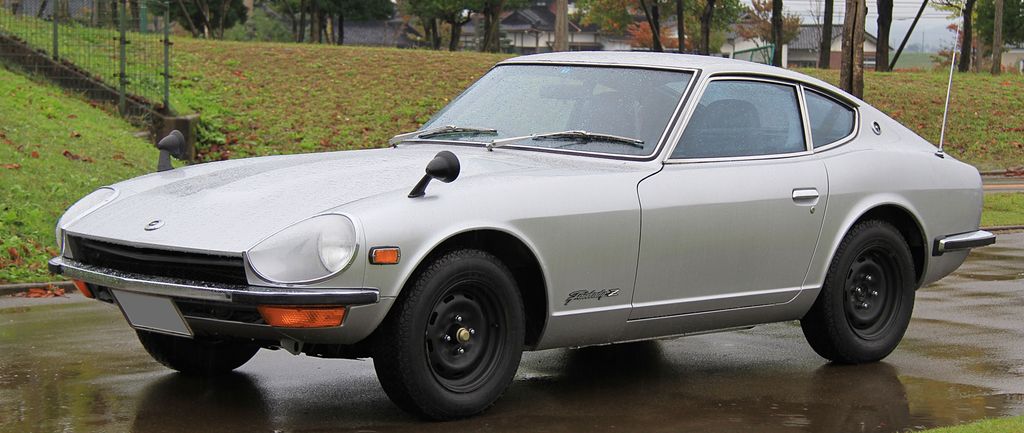
4. **Datsun 240Z (1970-1973)**The Datsun 240Z is often hailed as the vehicle that revolutionized the sports car market, effectively bringing genuine performance and elegant styling to the masses at an affordable price point. Introduced in 1969, it emerged as Japan’s compelling answer to the established European sports cars, quickly earning a reputation for its sophisticated yet accessible appeal. Its sleek, long-nosed design still looks remarkably modern today, a testament to its timeless aesthetics.
Underneath its appealing exterior, the 240Z boasted a reliable inline-six engine that delivered peppy performance, perfectly complemented by its balanced handling characteristics. This combination created a truly engaging and dynamic driving experience that belied its budget-friendly status. It swiftly became a highly desirable classic car, proving that thrilling performance didn’t necessitate an exorbitant price tag.
While prices for well-preserved Datsun 240Zs have seen a gradual increase in recent years as its iconic status grows, it surprisingly remains a classic that won’t entirely break the bank. You can still discover good examples at reasonable prices, especially when compared to its European counterparts. Its growing fan base and undeniable fun-to-drive nature make it an astute investment for the discerning enthusiast.
Car Model Information: 1972 Datsun 240Z
Name: Nissan Fairlady Z (Datsun 240Z, 260Z, and 280Z)
Aka: unbulleted list
Manufacturer: Nissan
Production: 1969–1978
Class: Sports car
Layout: Front-engine, rear-wheel-drive layout
Assembly: Hiratsuka, Kanagawa
BodyStyle: unbulleted list
Designer: Yoshihiko Matsuo
Predecessor: Datsun Sports
Successor: Nissan Fairlady Z (S130)
Caption: 1970–1973 Nissan Fairlady Z
Categories: 1970s cars, All Wikipedia articles written in American English, All articles with unsourced statements, Articles with short description, Articles with unsourced statements from February 2021
Summary: The Nissan S30, sold in Japan as the Nissan Fairlady Z but badged as the Datsun 240Z, 260Z, and 280Z for export, are 2-seat sports cars and 2+2 GT cars produced by Nissan from 1969 until 1978. The S30 was conceived of by Yutaka Katayama, the President of Nissan Motor Corporation U.S.A., and designed by a team led by Yoshihiko Matsuo, the head of Nissan’s Sports Car Styling Studio. It is the first car in Nissan’s Z series of sports cars.
The S30 had four-wheel independent suspension and a powerful straight-six engine with an overhead camshaft, features identified with far more expensive premium European sports cars and coupés such as the Jaguar E-Type and BMW 2800 CS, but absent from similarly priced sports cars such as the Alfa Romeo Spider, MGB and Opel GT, which had smaller four-cylinder engines and rear live axles. The S30’s styling, engineering, relatively low price, and impressive performance resonated with the public, received a positive response from both buyers and the motoring press, and immediately generated long waiting lists.
As a halo car, the S30 broadened the acceptance of Japanese carmakers beyond their image as producers of practical and reliable but prosaic and unfashionable economy cars. Datsun’s growing dealer network—compared to limited production imported sports cars manufactured by Jaguar, BMW, Porsche, Alfa Romeo, and Fiat—ensured both easy purchase and ready maintenance.
The S30 was initially sold alongside the smaller four-cylinder Datsun Sports, which was dropped from production in 1970. The S30 240Z is unrelated to the later 240SX, sold as the Silvia in Japan.
Get more information about: Nissan Fairlady Z (S30)
Buying a high-performing used car >>>
Brand: Datsun Model: 240Z
Price: $33,999 Mileage: 122,000 mi.
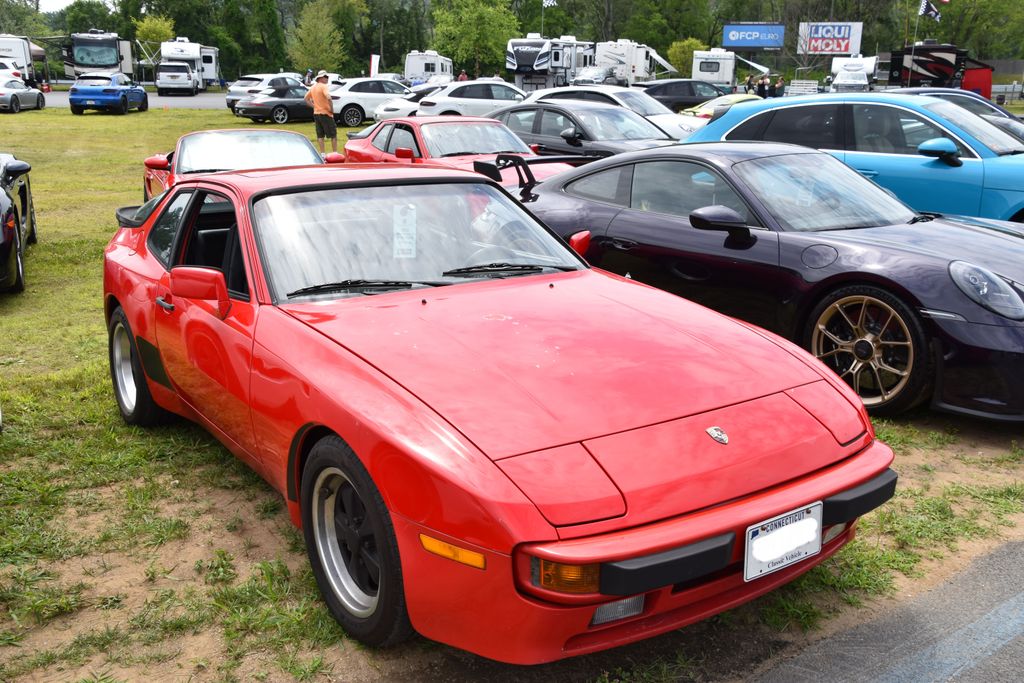
5. **Porsche 944 (1982-1991)**The Porsche 944 represents a remarkable opportunity for enthusiasts to experience the renowned Porsche pedigree without the often-prohibitive cost associated with its more famous sibling, the 911. Produced from 1982 to 1991, this transaxle sports car offers a near-perfect blend of performance, precise handling, and surprising affordability, making it an excellent entry point into classic Porsche ownership.
Its sleek, aerodynamic design has aged gracefully, still looking remarkably modern and purposeful on today’s roads. Mechanically, the 944 features a sophisticated front-engine, rear-wheel-drive layout with a balanced weight distribution, which contributes significantly to its engaging driving experience. This setup ensures that the car feels nimble and responsive, making it a joy to pilot through winding roads and daily commutes alike.
Early models of the Porsche 944 are particularly accessible to collectors, representing one of the more affordable ways to own a piece of classic Porsche engineering. While certain specialized parts might be pricier compared to some other vehicles on this list, the overall value proposition of the 944 is outstanding. It delivers true sports car credentials and undeniable prestige without demanding a premium price.
Car Model Information: 1990 Porsche 944 S2 Cabriolet
Caption: 1986 944 Turbo (951) US-spec
Name: Porsche 944
Manufacturer: Porsche AG
Class: Sports car
Production: 1982–1991
Layout: Front-engine, rear-wheel-drive layout
Assembly: Neckarsulm,Stuttgart
Designer: Harm Lagaay
Predecessor: Porsche 924
Successor: Porsche 968
BodyStyle: coupé,convertible
Engine: Straight-four engine,Turbocharger,2.7 L M44/12 I4,3.0 L M44/41 I4
Wheelbase: 2400 mm
Abbr: on
Length: 1986–1988: {{convert,4318,mm,in,1,abbr=on
Width: 1735 mm
Height: 1275 mm
Transmission: Automatic transmission,Manual transmission
Weight: Pre-1988: {{convert,1180,kg,lb,0,abbr=on
Categories: 1990s cars, All articles needing additional references, All articles with unsourced statements, Articles needing additional references from September 2024, Articles with short description
Summary: The Porsche 944 is a sports car manufactured by German automobile manufacturer Porsche from 1982 until 1991. A front-engine, rear-wheel drive mid-level model based on the 924 platform, the 944 was available in coupé or cabriolet body styles, with either naturally aspirated or turbocharged engines. With over 163,000 cars produced, the 944 was the most successful sports car in Porsche’s history until the introductions of the Boxster and 997 Carrera.
Extensive design revisions for the 1992 model year prompted Porsche to drop the 944 nameplate and rebrand the vehicle as the 968.
Get more information about: Porsche 944
Buying a high-performing used car >>>
Brand: Porsche Model: 944
Price: $17,900 Mileage: 96,579 mi.
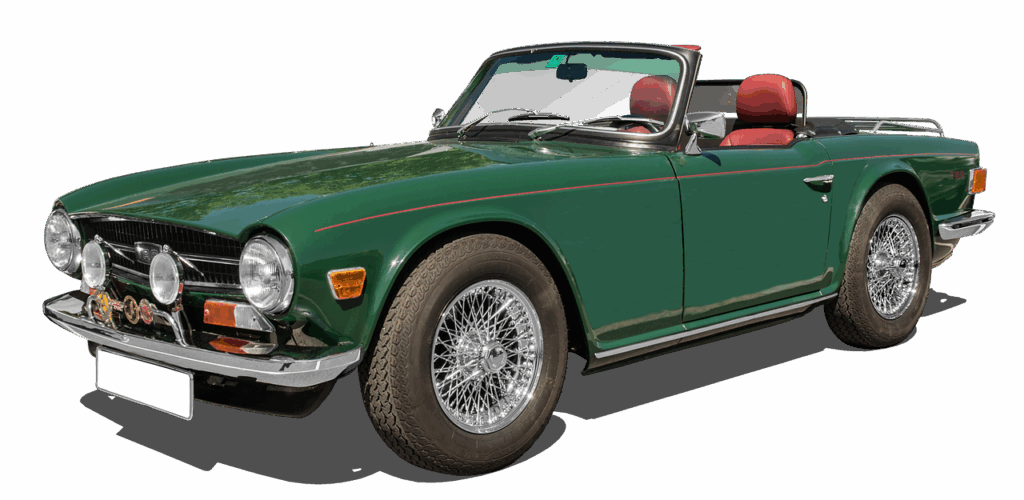
6. **Triumph TR6 (1969-1976)**The Triumph TR6 embodies the quintessential British roadster experience, offering a charming blend of classic open-top motoring and robust engineering. Produced from 1969 to 1976, its distinctive styling, characterized by crisp lines and a purposeful stance, immediately signals its sporting intentions. It’s a car that evokes images of scenic drives and the pure joy of the open road.
Powering this spirited convertible is a robust inline-six engine, which provides ample torque and a pleasing exhaust note, contributing significantly to its engaging driving dynamics. This engine, combined with the car’s relatively lightweight construction, ensures a lively and responsive feel behind the wheel, making every journey an event. It’s a genuine driver’s car, simple yet exhilarating.
One of the most attractive aspects for aspiring classic car owners is the TR6’s relatively low cost of entry. Coupled with strong enthusiast support and a well-established parts network, owning and maintaining a TR6 is far less daunting than many imagine. It represents an accessible and genuinely enjoyable option for collectors seeking that authentic, classic British open-top driving experience without a hefty financial burden.
Car Model Information: 1972 Triumph TR6 Base
Sp: uk
Name: Triumph TR6
Production: 1968–1976
Manufacturer: Triumph Motor Company
Class: Roadster (automobile)
BodyStyle: roadster (automobile)
Predecessor: Triumph TR5#TR250
Layout: FR layout
Transmission: manual transmission
Wheelbase: 2235 mm
Abbr: on
Length: 3950 mm
Width: 1550 mm
Height: 1270 mm
Weight: 1130 kg
Successor: Triumph TR7
Engine: Triumph I6
Assembly: Coventry
Categories: 1960s cars, 1970s cars, Articles with short description, CS1: long volume value, Cars introduced in 1968
Summary: The Triumph TR6 is a sports car that was built by the Triumph Motor Company of England. While production began several months earlier, the TR6 was officially introduced in January as a 1969 model year vehicle. The last TR6 was produced on 20 July 1976. Of the 91,850 TR6s produced, 83,480 were exported, almost all of them to the United States, while only 8,370 were sold in the UK.
Get more information about: Triumph TR6
Buying a high-performing used car >>>
Brand: Triumph Model: TR6
Price: $26,999 Mileage: 1,172 mi.
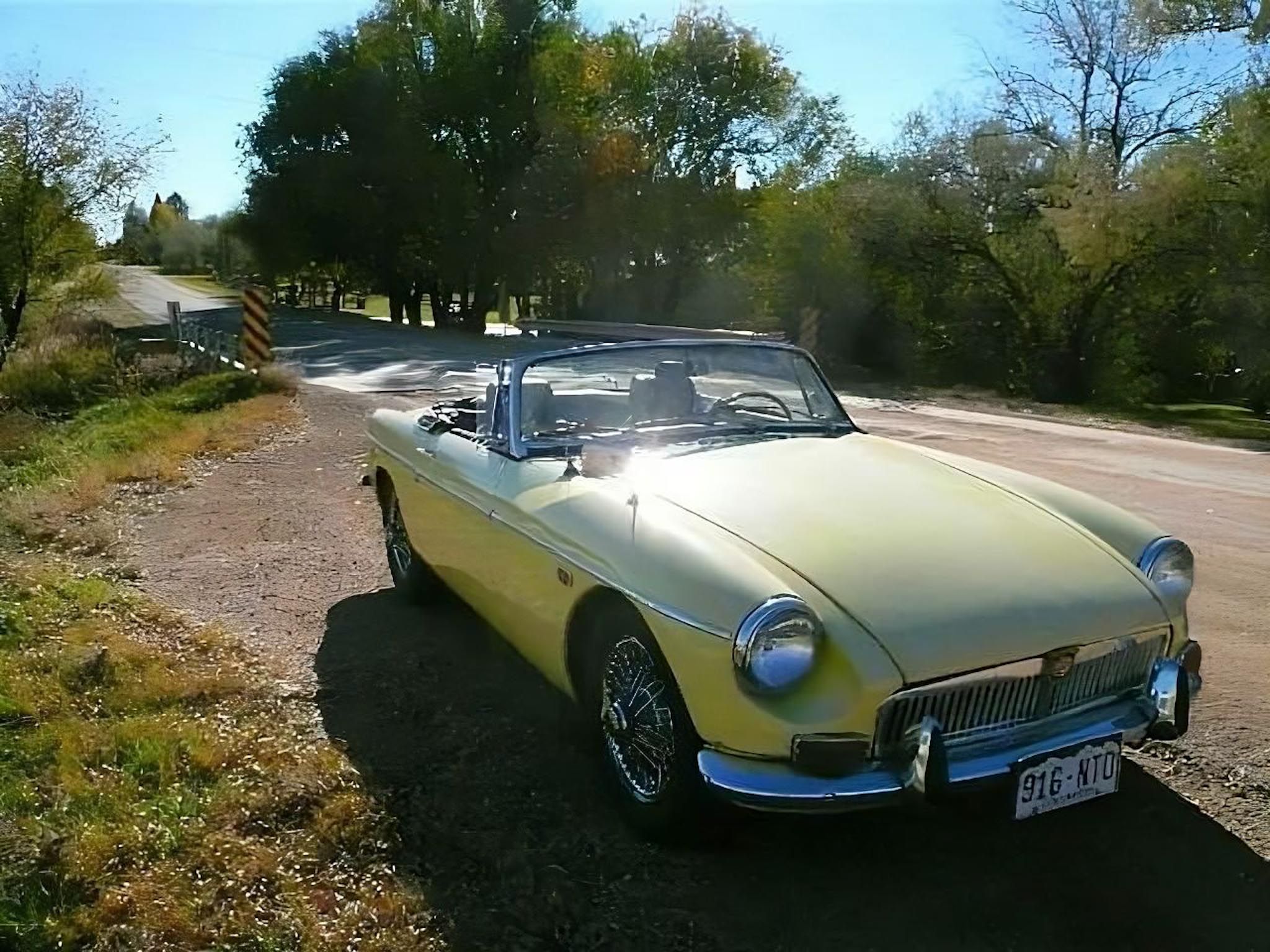
7. **MG MGB (1962-1980)**The MG MGB is a beloved classic British sports car that has endeared itself to generations of enthusiasts through its remarkable simplicity, impressive reliability, and sheer driving enjoyment. Produced over an extensive period from 1962 to 1980, the MGB became one of the most popular sports cars of its era, achieving widespread success and cementing its place in automotive history.
Its simple, elegant design and two-seater convertible layout make it the quintessential choice for sunny weekend drives, offering an unadulterated connection to the road. The sheer number of MGBs produced means that parts are incredibly easy to find, and prices for decent examples remain remarkably reasonable. This abundance significantly simplifies maintenance and repairs, making it an excellent choice for those new to classic car ownership.
With a large and dedicated fan base, the MGB benefits from a robust community of enthusiasts who readily share advice, support, and resources. This strong network, combined with its ease of workability, ensures that owning an MGB is not only affordable but also a deeply rewarding experience. It continues to be a popular and accessible entry point into the world of vintage sports cars.
Having explored a thrilling array of American muscle, pony cars, and established global sports car icons that defy high price tags, our journey into affordable automotive history continues. The classic car market is a vibrant tapestry, brimming with opportunities for enthusiasts to own a piece of motoring heritage without the need for an astronomical budget. We’ve seen how accessible true icons can be, but the spectrum of surprisingly affordable gems stretches even further.
Now, we shift our focus to a diverse collection of timeless machines. This includes elegant European roadsters, highly practical imports that redefined accessibility, and distinctive luxury cruisers that offer a touch of grandeur. These vehicles, much like those we’ve already celebrated, embody unique charm, proven reliability, and remarkable value, ensuring that your dream of classic car ownership can indeed become a reality without breaking the bank.
Car Model Information: 1979 MG MGB
Name: MGB
Caption: 1969 MGB roadster – rollover bar non-standard
Layout: FR layout
Manufacturer: British Motor Corporation,British Leyland,Rover Group
Production: 1962–1980 (original),1992–1995 (MG RV8)
Predecessor: MG MGA
Successor: MG F / MG TF
Class: Sports car
Assembly: Abingdon, Oxfordshire,Enfield, New South Wales,Cowley, Oxford
Categories: 1970s cars, 1980s cars, 1990s cars, All articles lacking reliable references, All articles with unsourced statements
Summary: The MGB is a two-door sports car manufactured and marketed from 1962 until 1980 by the British Motor Corporation (BMC), later the Austin-Morris division of British Leyland, as a four-cylinder, soft-top sports car sold under the MG marque. It was announced and its details first published on 19 September 1962. Variants include the MGB GT three-door 2+2 coupé (1965–1980), the six-cylinder sports car and coupé MGC (1967–1969), and the eight-cylinder 2+2 coupé, the MGB GT V8 (1973–1976).
Replacing the MGA in 1962, production of the MGB and its variants continued until 1980, though fixed roof GT models ceased export to the US in 1974. Sales for the MGB, MGC and MGB GT V8 combined totaled 523,836 cars. After a 12-year hiatus, the MGB re-entered production as the heavily modified MG RV8 with a limited run of 2,000 cars before its final replacement in 1995 by the MG F.
Get more information about: MG MGB
Buying a high-performing used car >>>
Brand: MG Model: MGB
Price: $15,499 Mileage: 74,767 mi.
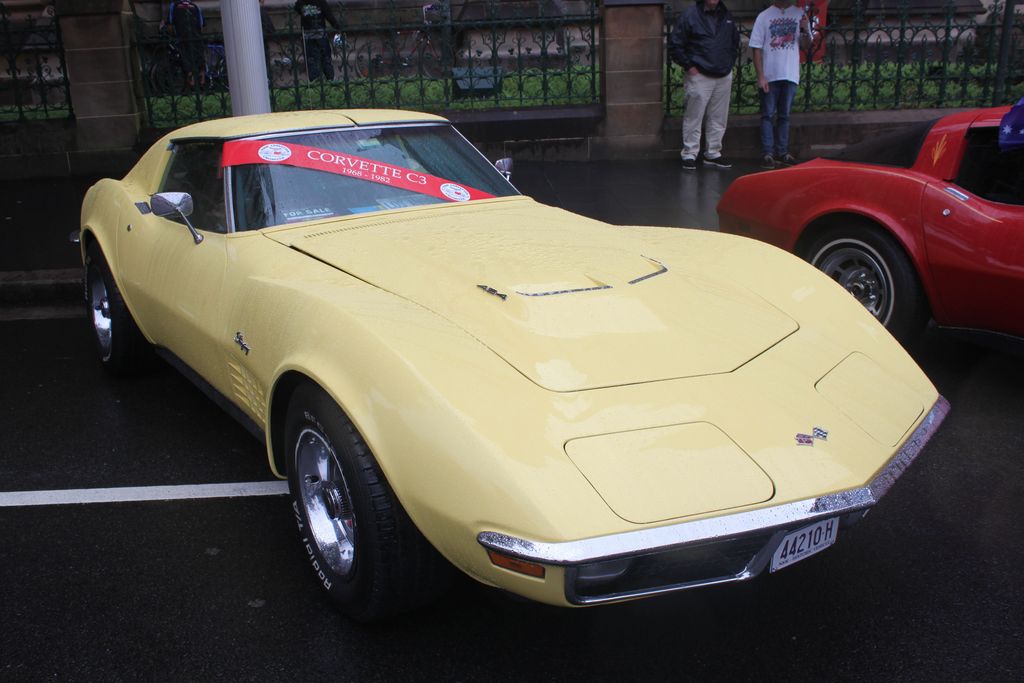
8. **Chevrolet Corvette C3 (1968-1982)**The third-generation Chevrolet Corvette, with its dramatic “Coke bottle” design and signature T-top roofs, represents a striking blend of American performance and audacious style. This era of Corvette truly captured the spirit of its time, offering a bold statement on the road that continues to turn heads today. It provides a unique opportunity to own a legendary American sports car without the prohibitive cost often associated with such status.
With an extensive production run from 1968 to 1982, the C3 Corvette saw a wide range of models and engine options, contributing to its current affordability and diverse appeal. From powerful big-block engines in its early years to more refined small blocks, collectors can find a variant that matches their performance desires and budget. This variety ensures that the C3 remains an accessible entry point for those seeking the iconic roar and distinctive presence of a true American classic.
The C3 Corvette delivers a compelling mix of visceral performance and undeniable style, making it a desirable option for collectors on a budget. Its long production history means that parts availability is generally good, and its status as a widely recognized icon ensures a robust enthusiast community. For those looking for an affordable American sports car that packs both a punch and unparalleled visual flair, the C3 stands as an excellent choice.
Car Model Information: 2004 Chevrolet Corvette Base
Name: Chevrolet Corvette
Caption: 2021 Chevrolet Corvette C8
Manufacturer: Chevrolet
Production: 1953–present
ModelYears: bulleted list
Assembly: bulleted list
Class: Sports car
BodyStyle: coupé
Layout: Front-engine, rear-wheel-drive layout,Rear mid-engine, rear-wheel-drive layout
Categories: 1950s cars, 1960s cars, 1970s cars, 1980s cars, 1990s cars
Summary: The Chevrolet Corvette is a line of American two-door, two-seater sports cars manufactured and marketed by General Motors under the Chevrolet marque since 1953. Throughout eight generations, indicated sequentially as C1 to C8, the Corvette is noted for its performance, distinctive styling, lightweight fiberglass or composite bodywork, and competitive pricing. The Corvette has had domestic mass-produced two-seater competitors fielded by American Motors, Ford, and Chrysler; it is the only one continuously produced by a United States auto manufacturer. It serves as Chevrolet’s halo car.
In 1953, GM executives accepted a suggestion by Myron Scott, then the assistant director of the Public Relations department, to name the company’s new sports car after the corvette, a small, maneuverable warship. Initially, a relatively modest, lightweight 6‑cylinder convertible, subsequent introductions of V8 engines, competitive chassis innovations, and rear mid-engined layout have gradually moved the Corvette upmarket into the supercar class. In 1963, the second generation was introduced in coupe and convertible styles. The first three Corvette generations (1953–1982) employed body-on-frame construction, and since the C4 generation, introduced in 1983 as an early 1984 model, Corvettes have used GM’s unibody Y‑body platform. All Corvettes used front mid-engine configuration for seven generations, through 2019, and transitioned to a rear mid-engined layout with the C8 generation.
Initially manufactured in Flint, Michigan, and St. Louis, Missouri, the Corvette has been produced in Bowling Green, Kentucky, since 1981, which is also the location of the National Corvette Museum. The Corvette has become widely known as “America’s Sports Car.” Automotive News wrote that after being featured in the early 1960s television show Route 66, “the Corvette became synonymous with freedom and adventure,” ultimately becoming both “the most successful concept car in history and the most popular sports car in history.”
Get more information about: Chevrolet Corvette
Buying a high-performing used car >>>
Brand: Chevrolet Model: Corvette
Price: $23,892 Mileage: 29,579 mi.

9. **Mazda MX-5 Miata (1990-1997)**The first-generation Mazda MX-5 Miata utterly redefined the affordable sports car market upon its introduction, swiftly becoming a modern classic. This delightful roadster, launched in 1989, revived the spirit of classic British and Italian open-top cars but with an added layer of Japanese reliability and meticulous engineering. Its lightweight design and incredibly responsive handling set a new benchmark for accessible driving enjoyment.
The MX-5 Miata’s enduring appeal lies in its fundamental simplicity and the sheer pleasure it offers behind the wheel. It’s a car celebrated for its perfect balance, communicative steering, and nimble chassis, making every drive an engaging experience, whether on winding country roads or for spirited daily commutes. This focus on pure driving dynamics, rather than excessive power, has cemented its status as a beloved vehicle among enthusiasts worldwide.
Even as it crosses the threshold into true classic status, early models of the Mazda MX-5 Miata remain surprisingly affordable, especially given their reliability and robust aftermarket support. Its widespread production means parts are plentiful and a vast, passionate community exists to offer support and advice. For anyone seeking a genuine, fun-to-drive, and exceptionally reliable classic roadster that won’t drain their savings, the first-generation Miata is an undeniable champion.
Car Model Information: 2020 Lincoln Aviator Reserve AWD
Name: Mazda MX-5
Manufacturer: Mazda
Aka: unbulleted indent list
Production: 1989–present
Assembly: Hiroshima
Class: Roadster (automobile),sports car
Layout: unbulleted indent list
Platform: List of Mazda model codes#Model codes
Categories: 1990s cars, 2000s cars, 2010s cars, 2020s cars, All Wikipedia articles in need of updating
Summary: The Mazda MX-5 is a lightweight two-person sports car manufactured and marketed by Mazda. The convertible is marketed as the Mazda Roadster (マツダ・ロードスター, Matsuda Rōdosutā) or Eunos Roadster (ユーノス・ロードスター, Yūnosu Rōdosutā) in Japan, and as the Mazda Miata () in the United States, and formerly in Canada, where it is now marketed as the MX-5 but is still commonly referred to as “Miata”.
Manufactured at Mazda’s Hiroshima plant, the MX-5 debuted in 1989 at the Chicago Auto Show and was created under the design credo Jinba ittai (人馬一体), meaning “oneness of horse and rider”. Noted for its small, light, balanced and minimalist design, the MX-5 has been called a successor to 1950s and 1960s Italian and British roadster sports cars. The Lotus Elan was used as a design benchmark.
Each generation is designated by a two-letter code beginning with the first generation NA. The second generation (NB) launched in 1998 for MY 1999, followed by the third generation (NC) in 2005 for MY 2006, and the fourth generation (ND) in 2015 for MY 2016.
More than 1 million MX-5s have been sold, making it the best-selling two-seat convertible sports car in history. The name miata derives from Old High German for “reward”.
Get more information about: Mazda MX-5
Buying a high-performing used car >>>
Brand: Mazda Model: MX-5 Miata
Price: $27,499 Mileage: 86,808 mi.

10. **BMW 2002 (1968-1976)**The BMW 2002 is widely regarded as a cornerstone of BMW’s illustrious reputation for crafting sporty, driver-focused automobiles. Introduced in 1966, this compact sedan, particularly the two-door variant, proved that a practical car could also be immensely fun to drive, laying the groundwork for BMW’s future success in the performance segment. Its clean, classic styling continues to be admired by design aficionados and car enthusiasts alike.
At its heart, the BMW 2002 featured a responsive and potent four-cylinder engine that delivered an engaging driving experience far exceeding its modest size. This engine, combined with its well-engineered chassis and nimble handling characteristics, made it a sensation among enthusiasts. The 2002 was not just a means of transport; it was a machine that actively encouraged spirited driving, carving out a niche for itself as a true driver’s car.
Despite its iconic status and significant historical importance, the BMW 2002 remarkably remains within reach for many collectors today. While pristine examples command higher prices, well-maintained drivers can still be found at reasonable costs. Its enduring appeal, coupled with a strong community and good parts availability, makes it a highly sought-after classic that offers an authentic taste of BMW’s golden era without demanding a premium price tag.
Car Model Information: 1971 BMW 2002
Name: BMW 02 Series
Caption: BMW 1600-2
Production: 1966–1977,837,038 units
Assembly: Munich
Class: Compact executive car
BodyStyle: 2-door coupé , 2-door convertible , 3-door hatchback
Layout: Front-engine, rear-wheel-drive layout
Engine: ubl
Wheelbase: cvt
Length: cvt
Width: cvt
Height: cvt
Weight: cvt
Transmission: 4-speed manual , 5-speed manual ,3-speed automatic
Successor: BMW 3 Series (E21)
Designer: Giovanni Michelotti
Manufacturer: BMW
Categories: 1970s cars, Articles with short description, BMW vehicles, CS1 German-language sources (de), CS1 Italian-language sources (it)
Summary: The BMW 02 Series is a range of sporty compact executive cars produced by German automaker BMW between 1966 and 1977, based on a shortened version of the New Class Sedans.
The first 02 Series produced was the 1600-2 (later renamed 1602) in 1966. In 1975, the 02 Series was replaced by the E21 3 Series (except for the 1502 model, which continued until 1977).
Get more information about: BMW 02 Series
Buying a high-performing used car >>>
Brand: BMW Model: 2002
Price: $45,550 Mileage: 5,001 mi.
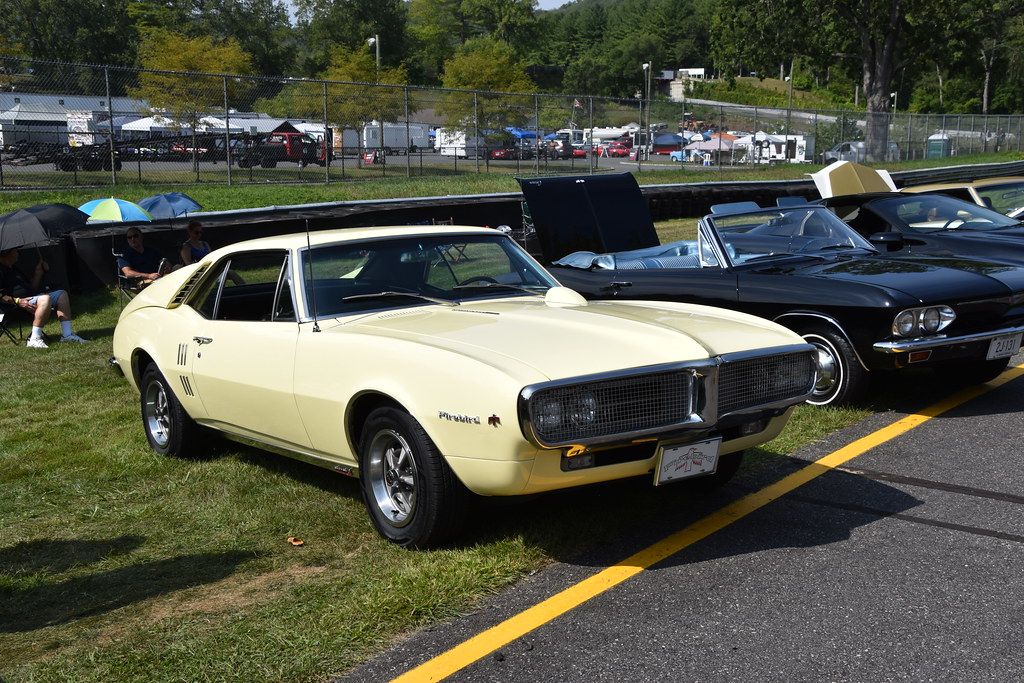
11. **Pontiac Firebird (1967-1969)**The first-generation Pontiac Firebird roared onto the scene as a quintessential American muscle car, offering a distinct alternative to its pony car rivals. Launched in 1967, it immediately captivated audiences with its aggressive stance, distinctive styling, and a powerful engine lineup designed for exhilarating performance. The Firebird stood out with its split grilles, unique taillights, and muscular proportions, establishing its own unique identity.
Sharing many underlying components with its Chevrolet Camaro sibling, the Firebird benefits significantly from widespread parts accessibility and a robust aftermarket. This shared lineage simplifies maintenance and upgrades, helping to keep ownership costs manageable for enthusiasts on a budget. Its powerful engine options, ranging from potent V8s to more economical inline-sixes, catered to a broad spectrum of drivers seeking American performance.
The first-generation Firebird offers classic muscle car looks and a thrilling driving experience at a relatively affordable price point. Its bold styling and undeniable road presence continue to impress, making it a compelling choice for collectors seeking a piece of iconic American automotive history. For those who appreciate raw power and distinctive design, the early Firebird remains an excellent and accessible classic.
Car Model Information: 1983 Pontiac Firebird Trans Am 2D Coupe
Name: Pontiac Firebird
Caption: The second, third, and fourth generations of,the Pontiac Firebird Trans Am
Manufacturer: Pontiac (automobile)
Production: February 23, 1967 – August 30, 2002
ModelYears: 1967 – 2002
Class: Pony car,Muscle car
Platform: GM F platform
Related: Chevrolet Camaro
Layout: Front engine, rear-wheel-drive layout
Categories: 1970s cars, 1980s cars, 1990s cars, 2000s cars, All articles with dead external links
Summary: The Pontiac Firebird is an American automobile built and produced by Pontiac from the 1967 to 2002 model years. Designed as a pony car to compete with the Ford Mustang, it was introduced on February 23, 1967, five months after GM’s Chevrolet division’s platform-sharing Camaro. This also coincided with the release of the 1967 Mercury Cougar, Ford’s upscale, platform-sharing version of the Mustang.
The name “Firebird” was also previously used by GM for the General Motors Firebird series of concept cars in the 1950s.
Get more information about: Pontiac Firebird
Buying a high-performing used car >>>
Brand: Pontiac Model: Firebird
Price: $22,991 Mileage: 38,257 mi.

12. **Mercedes-Benz SL (R107, 1971-1989)**The R107 Mercedes-Benz SL series stands as a testament to classic German engineering, combining timeless styling with remarkable durability and comfort. Produced for an impressive eighteen years, from 1971 to 1989, this luxury roadster became a symbol of sophistication and refined cruising. Its elegant lines and robust construction ensure it retains a dignified presence on the road even decades after its production.
Known for its exceptional build quality and a meticulously engineered ride, the R107 SL was designed for effortless long-distance touring. While not a lightweight sports car, its powerful engines, from smooth inline-sixes to potent V8s, delivered ample performance for spirited drives. This blend of reliability and luxurious comfort makes it an ideal option for collectors seeking a classic that can still be enjoyed frequently.
Despite its original luxury positioning and enduring appeal, the R107 Mercedes-Benz SL remains a surprisingly affordable option for collectors looking for a classic luxury car. Its long production run means that many examples are available, keeping prices relatively reasonable. For enthusiasts desiring an elegant, durable, and supremely comfortable classic roadster, the R107 SL offers immense value and an unmistakable touch of class.
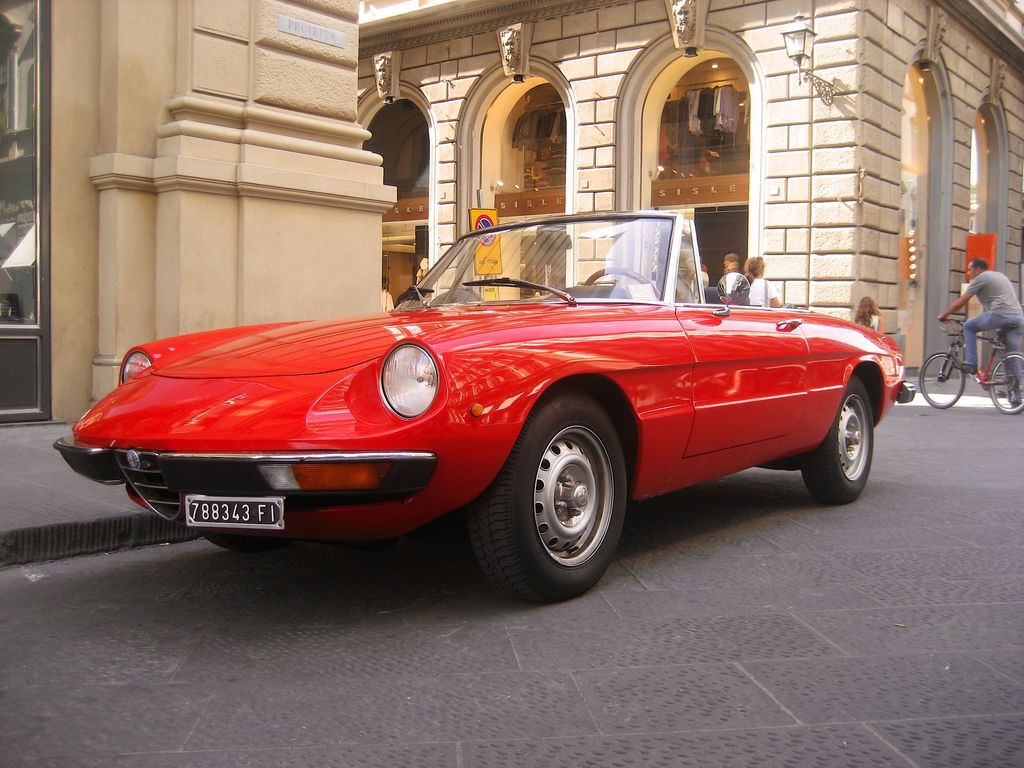
13. **Alfa Romeo Spider (1966-1994)**The Alfa Romeo Spider is an iconic Italian roadster renowned for its enduring design, spirited performance, and the sheer passion it evokes in drivers. With an exceptionally long production run spanning from 1966 to 1994, this two-seater convertible has captivated generations with its elegant Pininfarina styling and lively driving dynamics. It is a car that truly embodies the Italian concept of ‘la dolce vita’ – the sweet life.
The Spider’s lightweight construction, responsive steering, and a lively twin-cam engine combine to deliver an engaging and unadulterated driving experience. Every twist of the road feels amplified, and the distinctive, passionate sound of its engine is an auditory delight that is uniquely Alfa Romeo. It’s a car that encourages you to drive with feeling, connecting you directly to the mechanical symphony beneath the hood.
Despite its timeless design and passionate driving experience, the Alfa Romeo Spider remains a surprisingly affordable classic for enthusiasts. While parts can occasionally be more challenging to source than for some other cars on this list, the profound joy and unique character offered by the Spider make the effort undeniably worthwhile. It’s a beloved classic that offers a true taste of Italian flair without demanding an exorbitant price.
Car Model Information: 2020 Lincoln Aviator Reserve AWD
Name: Alfa Romeo Spider
Caption: Alfa Romeo Spider Series 2 (“Coda Tronca”)
Aka: Alfa Romeo “Duetto”
Manufacturer: Alfa Romeo
Assembly: Grugliasco,Turin
Production: 1966–1993
ModelYears: 1966–1994
Class: Sports car
Layout: Front-engine, rear-wheel-drive layout
BodyStyle: Roadster (automobile)
Related: Alfa Romeo Giulia,Alfa Romeo 105/115 Series Coupés
Designer: Aldo Brovarone
Predecessor: Alfa Romeo Giulietta (750/101)
Successor: Alfa Romeo GTV & Spider
Sp: uk
Categories: 1970s cars, 1980s cars, 1990s cars, Alfa Romeo vehicles, All articles needing additional references
Summary: The Alfa Romeo Spider (105/115 series) is a two-seater, front-engined, rear-drive roadster manufactured and marketed by Alfa Romeo from 1966 to 1994 in four distinct generations, or “series”, each with modifications ranging from modest to extensive.
As successor to the Giulia Spider, the Spider remained in production for almost three decades. The first three series were assembled by Pininfarina in Grugliasco and the fourth series in San Giorgio Canavese. The last Spider of that series was manufactured in April 1993—the last rear-wheel drive Alfa Romeo before the Alfa Romeo 8C Competizione of 2007.
In 2012, FCA Italy and Mazda studied the possibility of jointly developing a new Spider for 2015 based on the Mazda MX-5 platform. Ultimately, FCA and Mazda chose to manufacture a modern interpretation of the Fiat 124 Sport Spider rather than reviving the Alfa Romeo Spider.
Get more information about: Alfa Romeo Spider
Buying a high-performing used car >>>
Brand: Alfa Romeo Model: Spider
Price: $27,499 Mileage: 86,808 mi.
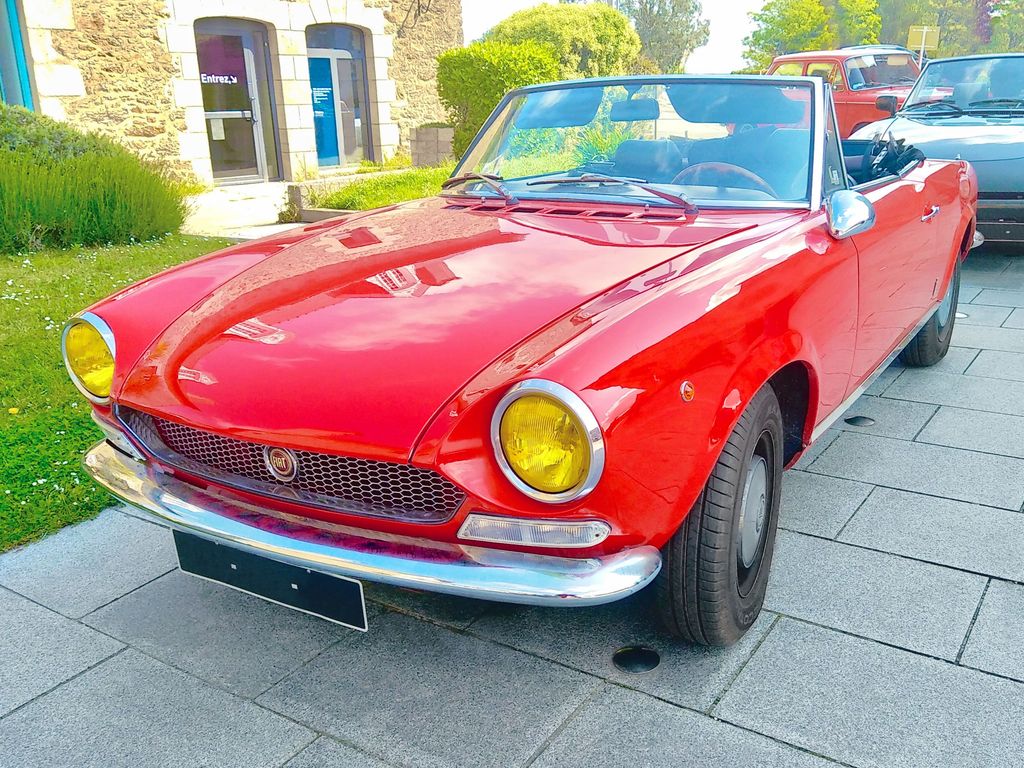
14. **Fiat 124 Spider (1966-1985)**The Fiat 124 Spider is a charming Italian convertible that offers a delightful blend of classic styling, a lively engine, and engaging driving dynamics. Produced from 1966 to 1985, this accessible roadster brought Italian open-top motoring to the masses, providing an exciting and stylish alternative to its British counterparts. Its elegant lines, penned by Pininfarina, have aged gracefully, ensuring it remains a visually appealing classic.
Underneath its stylish exterior, the 124 Spider featured a robust twin-cam engine that delivered peppy performance and an engaging soundtrack, perfectly suited for spirited drives on winding roads. Its nimble handling and relatively light weight ensured a genuinely fun-to-drive experience, making it a favorite for weekend cruises and sunny excursions. This combination of performance and design flair belied its modest price point.
The Fiat 124 Spider’s enduring affordability and stylish design make it an excellent choice for collectors seeking a classic European roadster. Its widespread production and a dedicated enthusiast base mean that parts and support are generally available, simplifying ownership. For those eager to experience the class, elegance, and classic roadster handling of an Italian vintage car without a hefty investment, the 124 Spider stands as a truly enticing option.
Car Model Information: 2020 Lincoln Aviator Reserve AWD
Name: Fiat 124 Sport Spider
Caption: Fiat 124 Sport Spider (CS)
Aka: Fiat Spider 2000 , Pininfarina Spider (1982–1985)
Manufacturer: Fiat Automobiles
Production: 1966–1985
Assembly: Turin
Designer: Pininfarina,Tom Tjaarda,Franco Martinengo (design director),Battista Pininfarina
Class: Sports car
BodyStyle: Cabriolet (automobile)
Layout: Front-engine, rear-wheel-drive layout
Related: Fiat 124
Engine: {{convert,1438,cc,L,1,abbr=on,Inline-four engine
Abbr: on
Transmission: Manual transmission,5-speed manual,Automatic transmission
Wheelbase: 89.75 in
Length: 156.25 in
Width: 63.5 in
Height: 49.25 in
Predecessor: Fiat Pininfarina Cabriolet
Successor: Fiat Barchetta,Fiat 124 Spider (2016)
Sp: uk
Categories: 1960s cars, 1970s cars, 1980s cars, All articles with dead external links, Articles with dead external links from August 2025
Summary: The Fiat 124 Sport Spider is a convertible sports car marketed by Fiat for model years 1966–1982 and by Pininfarina for 1982–1985 model years. Designed by and manufactured at the Italian carrozzeria Pininfarina factory, the monocoque, front-engined, rear-drive Sport Spider debuted at the November 1966 Turin Auto Show with styling by Tom Tjaarda.
Fiat later marketed the car as the Spider 2000 (1979–1982). After being retired by Fiat, Pininfarina continued the production of the model under its own brand as Pininfarina Spider Azzurra for the North American market and Pininfarina Spidereuropa for the European market for three more years, from August 1982 until 1985.
In 2015, a successor of the Fiat 124 Spider was presented at the Los Angeles Auto Show.
Get more information about: Fiat 124 Sport Spider
Buying a high-performing used car >>>
Brand: Fiat Model: 124 Spider
Price: $27,499 Mileage: 86,808 mi.
As our exploration concludes, it’s clear that the dream of owning a classic car is far from an elite fantasy. The automotive landscape is dotted with incredible machines that offer profound character, engaging driving dynamics, and a unique connection to history, all without demanding a king’s ransom. From the powerful roars of American muscle to the sophisticated charm of European roadsters and the dependable spirit of practical imports, these vehicles represent accessible pathways into a captivating hobby. They remind us that the most memorable drives aren’t always about the highest price tag, but about the joy of the open road and the timeless appeal of automotive artistry. So, roll down the windows, feel the breeze, and drive a piece of history home – it’s more within reach than you ever imagined.


